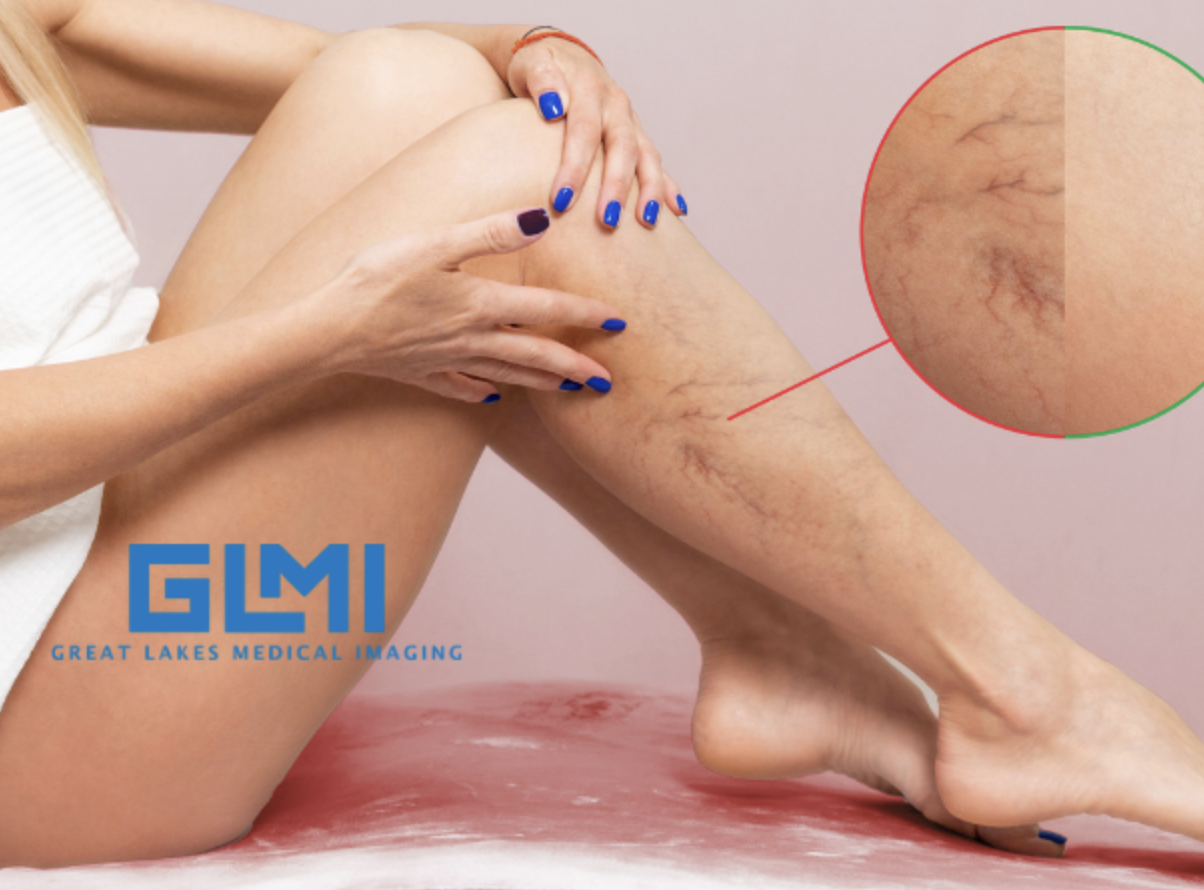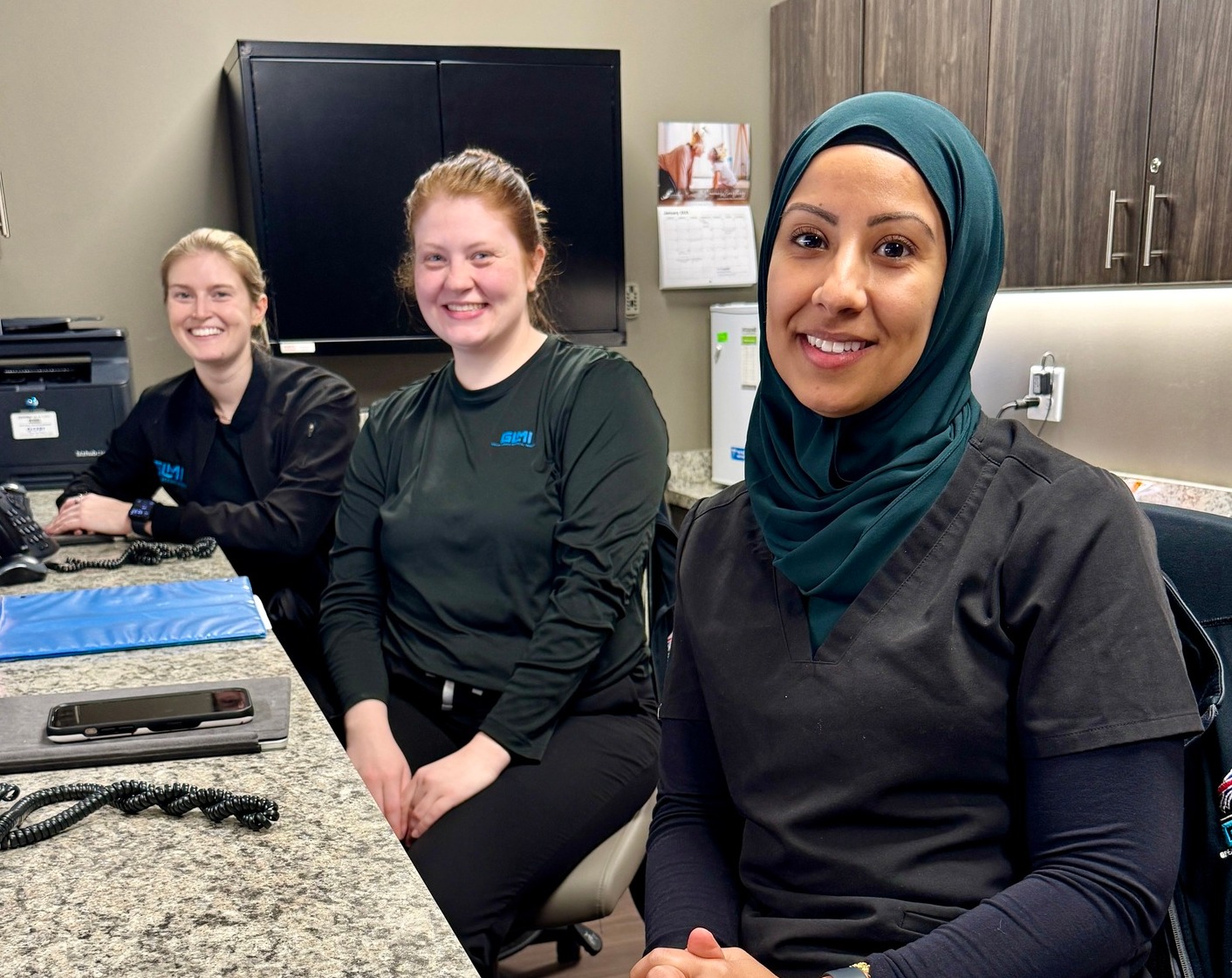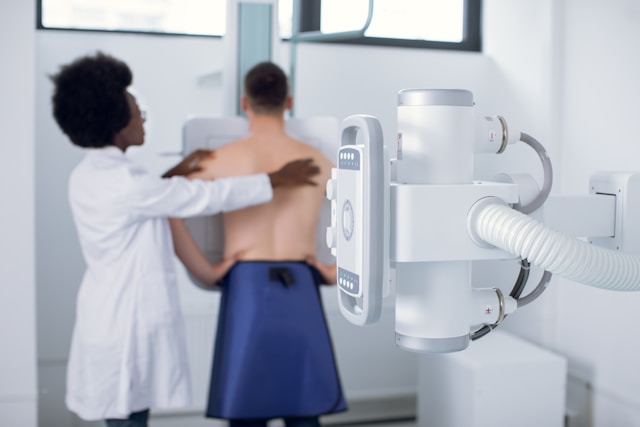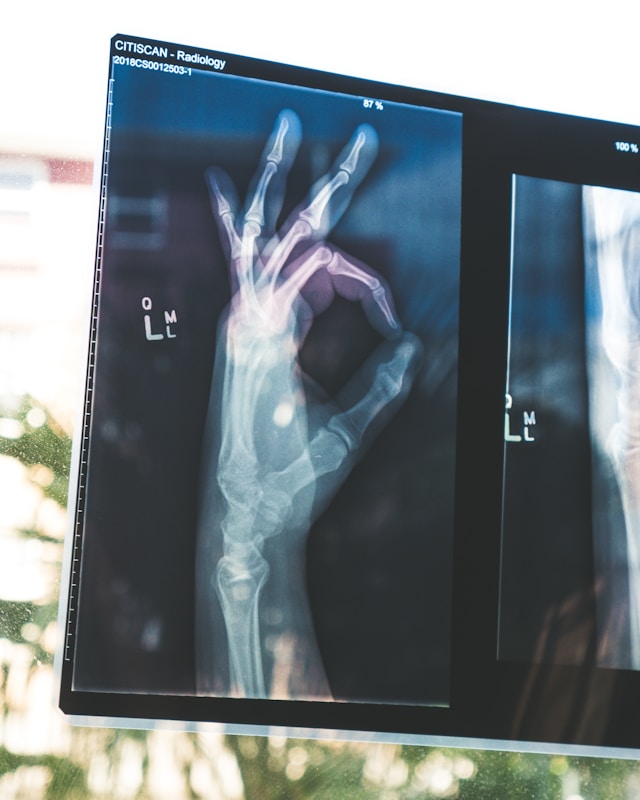Our Blog
How Can Fluoroscopy Help in Diagnosing GI Disorders?

Gastrointestinal (GI) disorders can significantly impact quality of life, causing symptoms like abdominal pain, bloating, and digestive issues. Diagnosing these disorders accurately and quickly is essential to provide effective treatment and relief for patients. Fluoroscopy, a specialized imaging technique that provides real-time X-ray images, is one of the key tools in diagnosing and evaluating GI disorders. At Great Lakes Medical Imaging (GLMI) in Buffalo, NY, we offer advanced fluoroscopy services to help patients and their healthcare providers diagnose a range of GI conditions effectively.
In this article, we’ll explore how fluoroscopy works, why it’s effective for diagnosing GI disorders, and what you can expect during a fluoroscopy procedure.
What is Fluoroscopy?
Understanding Fluoroscopy Technology
Fluoroscopy is an imaging technique that uses continuous X-rays to create a live video of the body’s internal structures, similar to an “X-ray movie.” During a fluoroscopy exam, an X-ray beam passes through the body, capturing real-time images that are displayed on a monitor. This allows healthcare providers to view dynamic processes, such as the movement of food and liquids through the digestive tract.
In GI diagnosis, fluoroscopy is often combined with a contrast agent, such as barium or iodine-based dye, which the patient ingests or receives through an enema. The contrast agent highlights the GI tract, making it easier for radiologists to see the contours and movements of the organs, including the esophagus, stomach, small intestine, and colon.
How Fluoroscopy is Used in Diagnosing GI Disorders
Barium Swallow and Upper GI Series
A barium swallow or upper GI series is one of the most common fluoroscopy procedures used to diagnose GI disorders. In this procedure, the patient drinks a liquid barium solution, which coats the walls of the upper GI tract (esophagus, stomach, and duodenum). As the patient swallows, fluoroscopy captures real-time images of the barium moving through the GI tract.
Barium swallow and upper GI series can help diagnose conditions such as:
- Gastroesophageal reflux disease (GERD): By observing the movement of barium through the esophagus, radiologists can detect acid reflux or other abnormalities in esophageal function.
- Hiatal hernia: Fluoroscopy can show if part of the stomach is protruding through the diaphragm into the chest cavity.
- Esophageal strictures: Fluoroscopy can detect narrowing in the esophagus that may cause swallowing difficulties.
- Ulcers and tumors: The barium solution highlights any abnormal areas in the stomach or duodenum, making it easier to identify ulcers or tumors.
Small Bowel Follow-Through
A small bowel follow-through is a fluoroscopy procedure that involves observing the movement of barium through the small intestine. After the patient drinks the barium solution, fluoroscopy captures images over time as the solution travels through the intestines.
This procedure is particularly useful for diagnosing:
- Crohn’s disease: Fluoroscopy can reveal signs of inflammation, ulcers, and narrowing in the small intestine, which are typical of Crohn’s disease.
- Small bowel obstructions: By observing how the barium moves through the small intestine, radiologists can detect blockages or abnormal movement.
- Malabsorption syndromes: Fluoroscopy can help assess the small intestine’s function and reveal conditions that affect nutrient absorption.
Barium Enema for Lower GI Tract
For examining the lower GI tract, including the large intestine and rectum, a barium enema may be used. In this procedure, a barium solution is introduced into the colon through an enema, coating the walls of the large intestine and highlighting its structure on the fluoroscopy images.
A barium enema is particularly effective for diagnosing conditions such as:
- Diverticulosis and diverticulitis: Fluoroscopy can reveal the presence of diverticula (small pouches in the colon) and detect signs of inflammation or infection.
- Colorectal polyps and cancer: Barium highlights abnormal growths, helping radiologists identify polyps or tumors in the colon.
- Ulcerative colitis: By examining the colon’s structure, fluoroscopy can reveal signs of inflammation and ulcers, which are typical in ulcerative colitis.
Advantages of Fluoroscopy in GI Diagnostics
Real-Time Imaging for Functional Assessment
One of the greatest advantages of fluoroscopy is its ability to provide real-time images of the GI tract in motion. This allows healthcare providers to assess how well the GI tract is functioning, observing:
- Swallowing function: Fluoroscopy enables radiologists to see how efficiently the esophagus moves food and liquid to the stomach, helping diagnose swallowing disorders.
- Peristalsis: The continuous, wave-like muscle contractions that move food through the digestive tract can be observed in real-time, allowing radiologists to detect irregular or weak peristalsis.
- Transit time: Fluoroscopy provides valuable information on how quickly substances move through the GI tract, which can help identify motility disorders.
Real-time imaging makes fluoroscopy an essential tool for diagnosing conditions that involve functional issues, such as GERD, achalasia, and bowel obstructions.
Enhanced Visualization with Contrast Agents
Using a contrast agent like barium improves the visibility of the GI tract, making it easier to detect abnormalities in the shape, size, and movement of the organs. The contrast allows for detailed images, highlighting even small abnormalities that may be missed on other imaging tests.
Contrast-enhanced fluoroscopy is especially valuable for diagnosing structural abnormalities, including:
- Narrowing or strictures: Contrast agents help highlight areas of narrowing or blockages in the intestines.
- Ulcers and erosion: The contrast provides clear images of inflamed areas, ulcers, and erosions in the stomach or intestines.
- Tumors and polyps: By improving the contrast between healthy and abnormal tissue, fluoroscopy can help detect tumors, polyps, and other growths in the GI tract.
Less Invasive than Other Procedures
Fluoroscopy offers a less invasive alternative to some endoscopic procedures for evaluating the GI tract. While endoscopy is still necessary for biopsy or direct tissue assessment, fluoroscopy provides valuable information without requiring sedation or invasive scopes. This makes it a preferred choice for patients who need diagnostic information but want to avoid more invasive procedures.
What to Expect During a Fluoroscopy Procedure
Preparing for Your Exam
Before your fluoroscopy procedure, you’ll receive specific instructions from your healthcare provider. Preparation may include fasting (not eating or drinking) for several hours to ensure clear images of the GI tract. If a barium enema is planned, you may be asked to follow a specific diet or use a laxative the day before to clear the colon.
At GLMI, our team will guide you through the preparation process to ensure you’re ready for your fluoroscopy exam.
During the Procedure
Fluoroscopy exams are generally quick and painless. Here’s what you can expect:
- Positioning: You’ll be positioned on an exam table that moves through the fluoroscopy machine. For certain procedures, you may need to adjust your position to capture different angles of the GI tract.
- Administering the contrast agent: Depending on the type of procedure, you’ll either swallow a barium solution or receive it through an enema. This contrast will coat the lining of the GI tract, making it easier to see on the monitor.
- Real-time imaging: As the contrast moves through your digestive system, the radiologist will capture images in real-time, observing the movement and identifying any abnormalities.
Most fluoroscopy procedures take 30-60 minutes, after which you can return to your normal activities.
After the Procedure
After a barium swallow or enema, it’s essential to drink plenty of water to help flush the barium from your system. You may notice a change in stool color as your body eliminates the contrast material, but this is temporary.
The radiologist will analyze the images captured during your procedure and provide a report to your healthcare provider, who will discuss the findings with you and recommend any necessary treatment.
Why Choose GLMI for GI Fluoroscopy in Buffalo, NY?
Advanced Imaging Technology
At Great Lakes Medical Imaging, we use state-of-the-art fluoroscopy technology to provide the highest-quality images for accurate GI diagnoses. Our advanced equipment and experienced radiologists ensure precise and reliable results.
Expert Radiologists
Our board-certified radiologists specialize in gastrointestinal imaging and have extensive experience interpreting fluoroscopy results for a variety of GI conditions. Their expertise ensures that you receive an accurate diagnosis, guiding your healthcare provider in developing an effective treatment plan.
Convenient Locations Throughout Western NY
With multiple locations in Buffalo and Western NY, GLMI makes it easy to schedule your fluoroscopy exam at a location that’s convenient for you. Our compassionate team is here to answer your questions and make the process as comfortable as possible.
Take Action Today
Schedule Your Fluoroscopy Exam
If you’re experiencing GI symptoms or have been referred for a fluoroscopy exam, contact us today to schedule your appointment at Great Lakes Medical Imaging. Our team is here to provide expert care and diagnostic support for all your imaging needs.
Consult with Your Healthcare Provider
If you have questions about whether fluoroscopy is the right option for diagnosing your GI condition, consult with your healthcare provider. They can help assess your symptoms and determine if fluoroscopy is the best approach for your needs.
Contact Us for Comprehensive GI Imaging Services in Buffalo, NY
At GLMI, we are committed to providing comprehensive GI imaging services, including fluoroscopy, to patients in Buffalo, NY, and Western NY. Our advanced technology and experienced radiologists ensure accurate diagnoses and patient-centered care. If you have any questions or need to schedule an appointment, please contact us today.
Medical Disclaimer
This article is for general informational purposes only and is not a substitute for professional medical advice. Always consult with a qualified healthcare provider regarding any medical conditions or concerns you may have.
‹ Back









